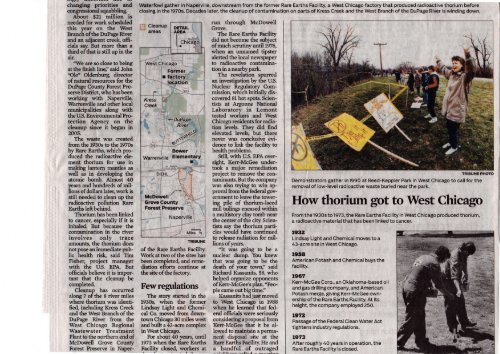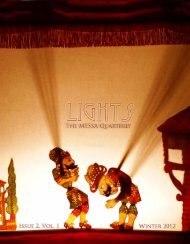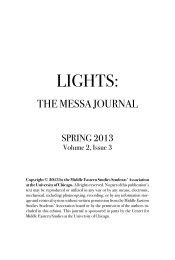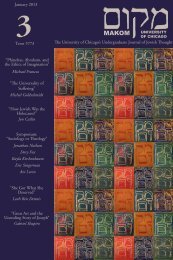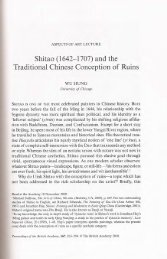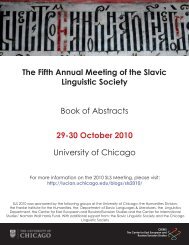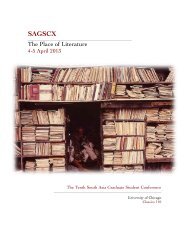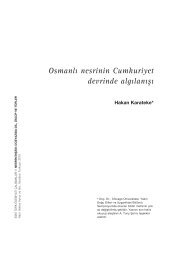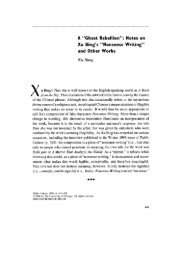A radioactive legacy lingers
A radioactive legacy lingers
A radioactive legacy lingers
Create successful ePaper yourself
Turn your PDF publications into a flip-book with our unique Google optimized e-Paper software.
changing priorities and<br />
congressional squabbling<br />
About $21 million is<br />
needed for work scheduled<br />
this year on the West<br />
Branch of the DuPage River<br />
and an adjacent creek, ofEcials<br />
say. But more than a<br />
third of that is still up in the<br />
air.<br />
'nV'e are so close tobeing<br />
atthe finishline," said John<br />
"Ole" Oldenburg, director<br />
ofnatural resources for the<br />
DuPage County Forest Preserve<br />
Disdict, who has been<br />
working with Naperville,<br />
Warrenville and other local<br />
municipalities along with<br />
the U.S. Environmental Protection<br />
Agency on the<br />
cleanup since it began in<br />
2005.<br />
The waste was created<br />
from the l93Os to the 197Os<br />
by Rale Eafths, which pro.<br />
duced the <strong>radioactive</strong> element<br />
thorium for use in<br />
making lantern mantles as<br />
well as in developing the<br />
atomic bomb. Almost 4O<br />
years and htrndreds of millions<br />
of dollars late4 work is<br />
still needed to clean up the<br />
<strong>radioactive</strong> pollution Rare<br />
Earths leftbehind.<br />
Thoriumhasbeen linked<br />
to cance! especially if it is<br />
inhaled" But because the<br />
contamination in the river<br />
involves only trace<br />
amounts, the thorium does<br />
not pose an immediate public<br />
health rish said Tim<br />
Fisher, project manager<br />
with the U.S. EPA. But<br />
officials believe it is important<br />
that the cleanup be<br />
completed-<br />
Cleanup has occurred<br />
along7 of the 8 river miles<br />
where thorium was identified,<br />
including Kress Creek<br />
and the West Branch of the<br />
DuPage River from the<br />
West Chicago Regional<br />
Wastewater Treatment<br />
Plantto the norttrern end of<br />
McDowell Grove County<br />
Forest Preserve in Naper-<br />
Waterfowl gather in Naperville, downstream from the former Rare Earths Faclllty, a West Chicago factory that produced <strong>radioactive</strong> thorium before<br />
closlng ln the 197Os. Decades later, the cleanup of contamination on parts of Kress Creek and the West Branch of the DuPage River ls windlng down.<br />
TRIBUNE<br />
of the Rare Earths Facility.<br />
Work at two of the sites has<br />
been completed, and remediation<br />
efforts continue at<br />
ttre site ofthe factory.<br />
Fewregulations<br />
The story started in the<br />
193O9 when the former<br />
Lindsay Light and Chemical<br />
Co. moved from downtown<br />
Chicago 3O miles west<br />
andbuilt a +a-acre complex<br />
inWestChicago.<br />
For about 40 years, until<br />
1973 when the Rare Earths<br />
Facility closed, workers at<br />
run through McDowell<br />
Grove.<br />
The Rare Earths Facility<br />
did not become the subject<br />
of much scrutinyuntil 1976,<br />
when an unnamed tipster<br />
alerted the local newspaper<br />
to <strong>radioactive</strong> contamination<br />
in a nearby park.<br />
The revelation spurred<br />
an investigation by the U.S.<br />
Nuclear Regulatory Commissiorl<br />
which initially discovered<br />
81 hot spots. Scientists<br />
at Argonne National<br />
Laboratory in Lemont<br />
tested workers and West<br />
Chicago residents for radiation<br />
levels. They did find<br />
elevated levels, but there<br />
never was conclusive evidence<br />
to link the facility to<br />
healthproblems.<br />
Still, with U.S. EPA oversighg<br />
Kerr-McGee undertook<br />
a major remediation<br />
project to remove the contaminants.<br />
But the company<br />
was also trying to win approval<br />
from the federal government<br />
to leave the towering<br />
pile of thorium-laced<br />
mi[ tailings encased within<br />
a multistory clay tomb near<br />
the center ofthe city. Scientists<br />
say the thorium particles<br />
would have continued<br />
to release radiation for millions<br />
ofyears.<br />
"It was going to be a<br />
nuclear dump. You knew<br />
that was going to be the<br />
death of your town," said<br />
Richard Kassanits, 58, who<br />
helped organize opponents<br />
of Kerr-McGee's plan "People<br />
came outbigtimeJ'<br />
Kassanits had just moved<br />
to West Chicago in f988<br />
when he learned that federal<br />
officials were seriously<br />
considering a proposal from<br />
Kerr-McGee that it be aIlowed<br />
to maintain a permanent<br />
disposal site at the<br />
Rare Earths Facility. He and<br />
a handful of outraged<br />
TRIBUNE PHOTO<br />
Demonstrators gather ln 1990 at Reed-Keppler Park in West Chlcago to call for the<br />
removal of low-level radloactlve waste buried near the park.<br />
How thorium got to West Chicago<br />
From the 1930s to 1973, the Rare Earths Faclllty in West Chlcago produced thorlum,<br />
a radloactive material that has been linked to cancer.<br />
1932<br />
Lindsay LiEht and Chemical moves to a<br />
43-acre site in West Chicago.<br />
1958<br />
American Potash and Chemical buysthe<br />
facility.<br />
1967<br />
Kerr-McGee Corp., an Oklahoma-based oil<br />
and gas drllling company, and Amerlcan<br />
Potash merge, giving Kerr-McGee ownership<br />
of the Rare Earths Facility. At lts<br />
height, the company employed 25O.<br />
t9'ti2<br />
Passage of the Federal Clean Water Act<br />
tightens industry regulations.<br />
1973<br />
After roughly 4O years in operation, the<br />
Rare Earths Facility is closed.


